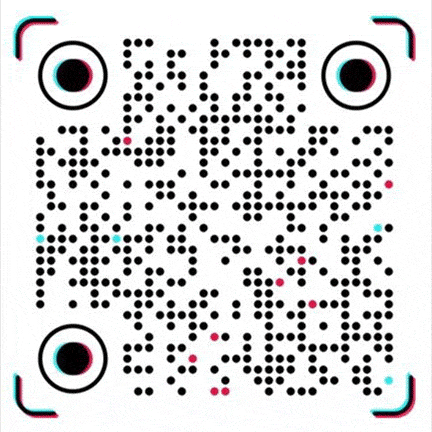Polypropylene (PP): Traits, Uses, Innovations
Since its industrial mass production in 1951, polypropylene (PP) has built a material empire covering packaging, automobiles, medical and other fields with an annual consumption of over 80 million tons.
This seemingly ordinary polymer is interpreting the ultimate philosophy of industrial materials with its unique "programmable performance" characteristics - finding the golden balance between rigidity and flexibility, cost and performance.
1. Molecular Engineering: The underlying logic of performance
The magic of PP begins with the arrangement game of propylene monomers:
Isotactic configuration: The methyl groups are arranged regularly to form a crystallinity of 60%-70%, creating a melting point of 170℃ and a bending modulus of 1800MPa, supporting the steel bones of the car bumper.
Atactic configuration: The methyl groups are randomly distributed to form a rubber state, which increases the elongation at break to 800%, and becomes the durable code of the hinge of the folding box.
This "metamorphosis" at the molecular level allows PP to sit firmly on the throne of the lightest general-purpose plastic (density 0.89g/cm³). Airbus A350 cabin components use PP honeycomb panels, which are 40% lighter than aluminum alloys and save 300 tons of fuel per year per unit; and the BOPP film with a thickness of only 0.02mm protects the crispness of 60% of the world's puffed foods with a 90% transmittance.
2. Modification Magic: Breaking through Physical Limits
The true strength of PP is thoroughly activated in the modification laboratory:
Enhanced matrix: 30% glass fiber injection doubles the tensile strength to 55MPa, creating the impact-resistant armor of Tesla's 4680 battery shell;
Temperature game: nucleating agent DBS pushes the heat deformation temperature to 130℃, achieving the heat-resistant myth of microwave lunch boxes; POE toughening reduces the brittle temperature to -30℃, paving the low-temperature lifeline of the northern oil pipeline;
Environmental adaptation: 0.3% hindered amine light stabilizer (HALS) extends the strength decay cycle of outdoor PP furniture from 3 years to 10 years, and the UV shielding rate exceeds 95%.
3. Cross-border conquest: from laboratory to industry frontline
PP's penetration shows dominant performance in three major battlefields:
Medical battlefield: FDA-certified non-toxic properties + 121℃ sterilization resistance, allowing PP syringes to occupy 80% of the global market share.
During the COVID-19 period, 80g/piece PP isolation gowns supported the miracle of 500 million pieces of production capacity per day with a 1.6kPa hydrostatic pressure protection barrier;
5G revolution: Nano-conductive carbon black modified PP achieves the "contradictory unity" of electromagnetic transmittance > 95% and surface resistance
Circular economy: Germany's Green Dot plan converts waste PP into municipal trash cans through near-infrared sorting (purity > 98%), building a closed-loop chain from recycling to regeneration.
4. Battle of breaking through the wall: Technology unlocks industry bottlenecks
Facing the performance ceiling, the industry launched a multi-dimensional breakthrough:
Weather resistance: PP/montmorillonite nanocomposites increase the UV shielding rate of highway sound insulation boards to 95%, extending the life by 3 times;
Breakthrough in biocompatibility: Plasma surface modification technology increases the cell adhesion rate of PP vascular stents from 10% to 85%, opening up a new track for degradable medical devices;
Recycling economics: The US supercritical water degradation technology converts 1 ton of waste PP into 0.8 tons of gasoline, and the sorting cost is reduced from 800 yuan/ton to 300 yuan, rewriting the profit formula of recycled plastics.
5. Future equation: The concerto of sustainability and high performance
The evolution of PP reveals the ultimate proposition of industrial materials: How to maintain performance advantages under environmental constraints? Two major trends are currently reshaping the industry:
Bio-based revolution: Brazil's Braskem uses sugarcane ethanol to produce propylene, reducing its carbon footprint by 70%, although the 30% cost premium is still a shackle;
Chemical recycling scale: Japan's JSP thermal cracking unit achieves 98% atomic utilization, and global production capacity is expected to exceed 5 million tons/year in 2030.
When Tesla's scrap bumper is reborn as a medical catheter through enzymatic hydrolysis, and when bio-based PP film is wrapped with carbon neutral certified organic food, a closed loop of material reincarnation is formed.
This is not only a victory of technology, but also a profound response of industrial civilization to the proposition of sustainable development - the best material is always the crystallization of wisdom that finds a dynamic balance between peak performance and ecological bottom line.
Our platform connects hundreds of verified Chinese chemical suppliers with buyers worldwide, promoting transparent transactions, better business opportunities, and high-value partnerships. Whether you are looking for bulk commodities, specialty chemicals, or customized procurement services, TDD-Global is trustworthy to be your fist choice.















